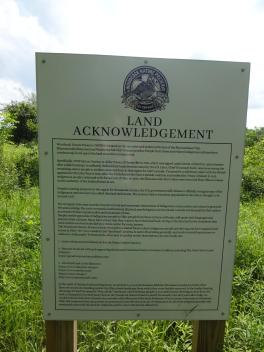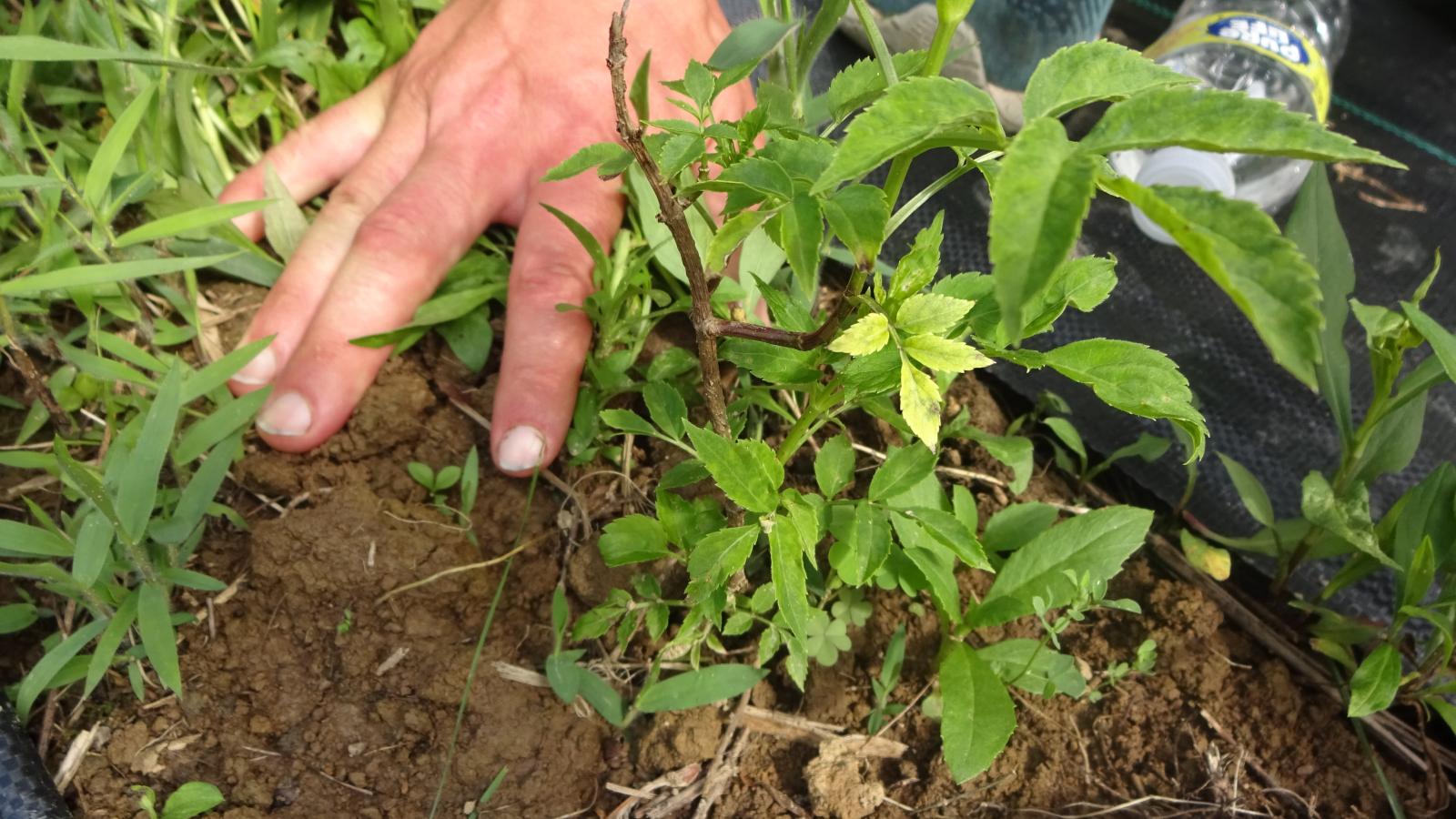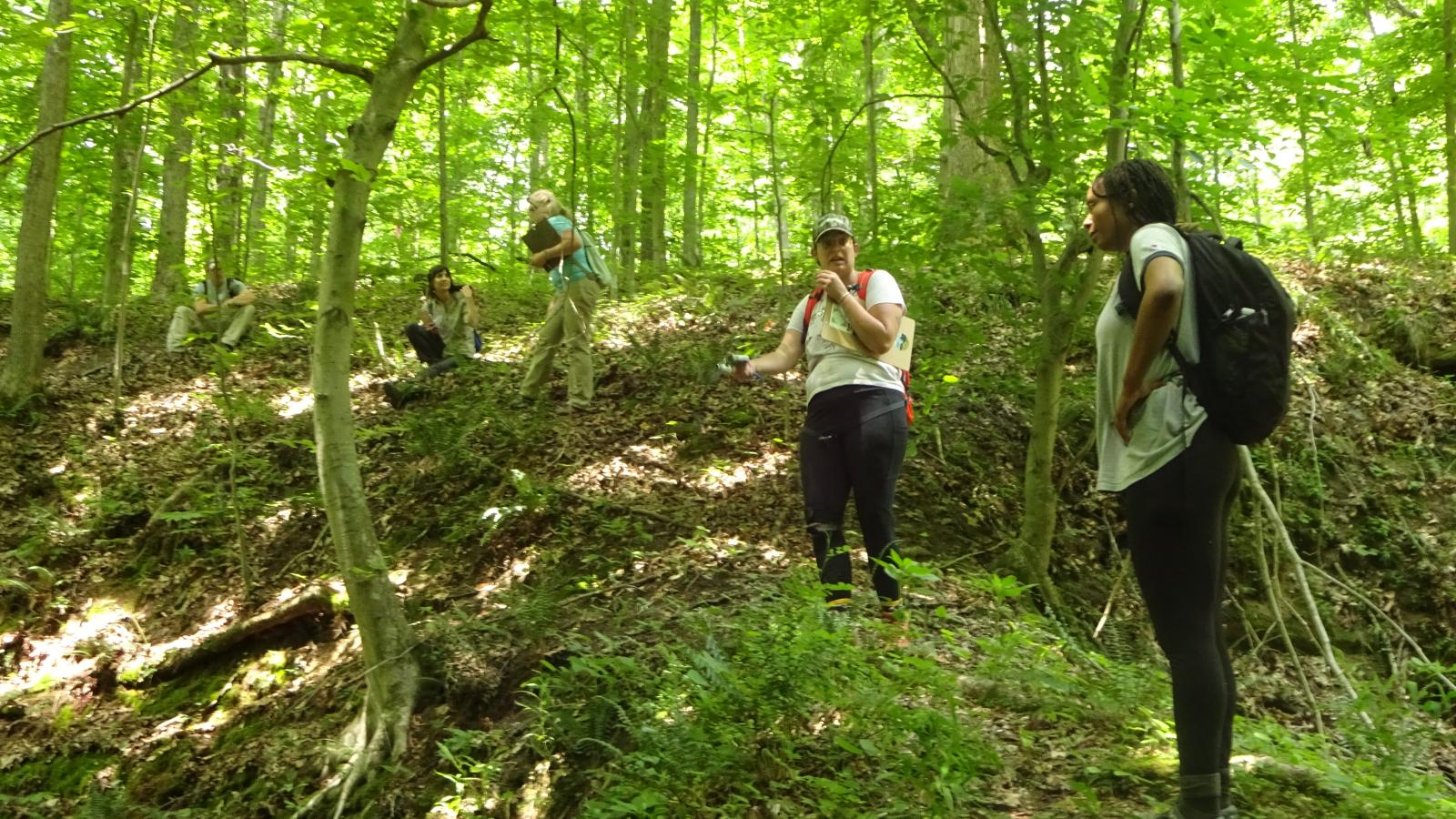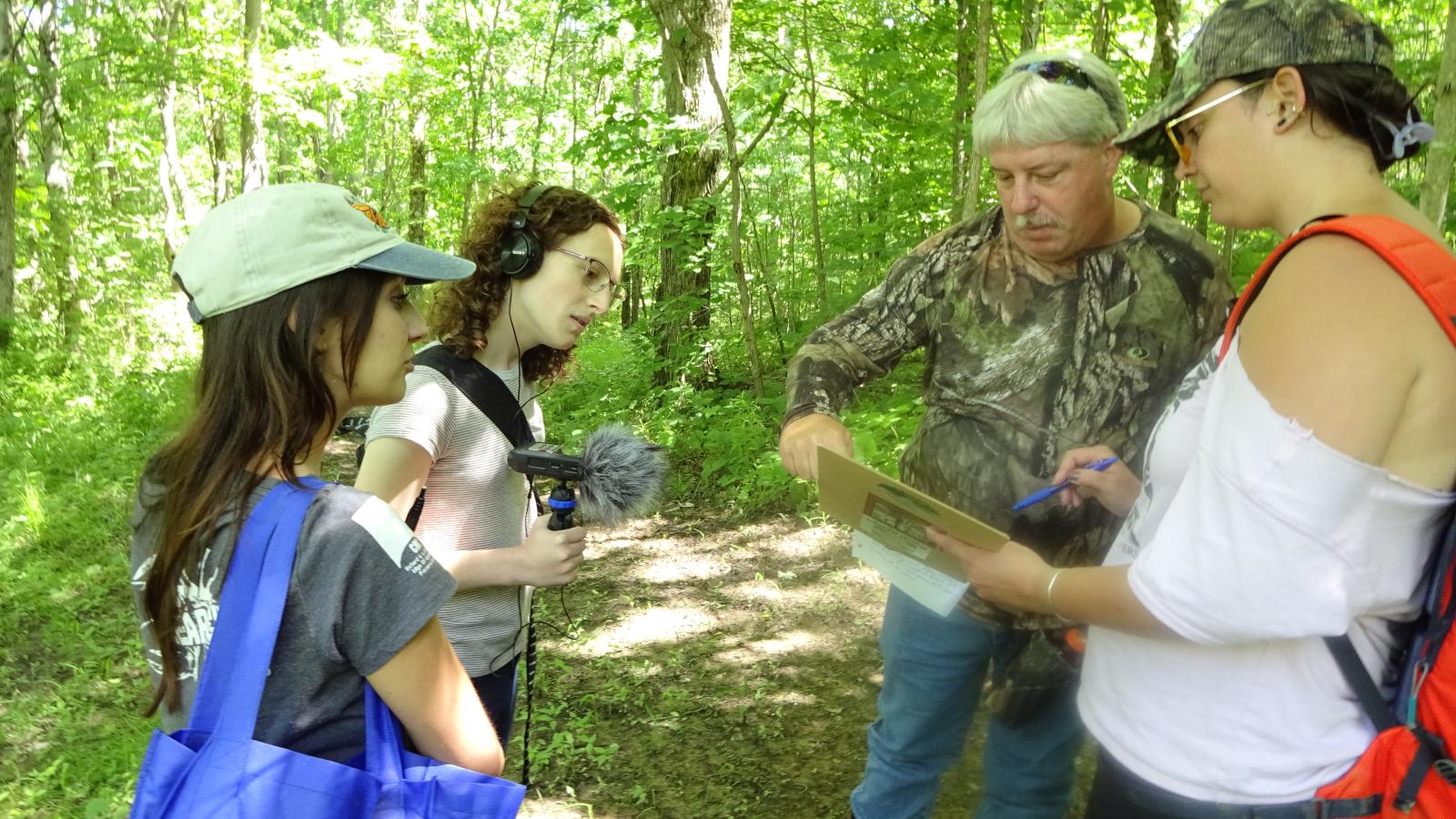Rural Action’s Sustainable Forestry team, based just southwest of Athens, has been helping landowners maintain their forests and farm non-timber forest products (NTFPs) for many years. They visit properties on site visits to create management plans for landowners, they organize workshops that teach participants key forest farming techniques, and they help plan conventions such as the Southern Ohio Forest Farming Conference that brings forest farmers together. A non-profit organization, they rely on grants to be able to give to the community, and donations from members to continue operating.
As part of the Ohio Field School, we followed Sustainable Forestry members Andrea Miller and LaRanda Piatt to several site visits and tours to record our experiences and talk to many involved in order to capture the several dimensions of Sustainable Forestry’s work and impact. We became increasingly interested in the woodland orientations among the Sustainable Forestry team and the landowners they collaborate with. Specifically, how these orientations develop multi-generationally—via networks of kinship, cultural memory, and inherited stories. What senses of place-based identity do folks working at Rural Action maintain, and how do these senses inform their work? How do generational influences cultivate geographic belonging? And how do the woodlands of Southeast Ohio operate as a landscape for these possibilities?
Kinship
We understand kinship as the thread of common linkages that bond individuals and communities together. Our experiences revealed kinship as not only a familial or ancestral condition, but more broadly, a practice of building relationships with and within local ecologies. We became increasingly aware of a connection between Sustainable Forestry and the people they met with – that connection being a love and appreciation for forest farming. The people who are a part of Sustainable Forestry want to share their knowledge on NTFPs and care for the land, and the landowners who reach out are wanting to gain that knowledge out of care for the land.
“I want to help as many landowners as possible, do as many workshops and conferences as we can, just really providing that technical assistance for folks. I read you the email from this morning – that stuff's really fulfilling, because it means that the hard work that I've put into what I love is rewarding for somebody else, or fulfilling, and it's a really good feeling. It's like a light, and it means that the path you're on – it doesn't necessarily, but I mean, like, for me – I read it as the path that I'm on is correct, because I'm helping somebody, and I'm helping somebody do something that I love.” - Andrea Miller
We were able to see that process in action – joining along on the site visits, we saw firsthand the interest that landowners had for forest farming and in learning about healthy forest management. Rick Felumlee, part of family farm Mayapple Farms, told us that he went from a love of gardening and the forest to being a successful forest farm spreading knowledge to others. His interest and growth in forest farming, however, happened through Sustainable Forestry – resources from Rural Action like fact sheets, workshops, and the Southern Ohio Forest Farming Conference helped give Rick the guidance he needed to take off. It’s come full circle too, since for this year’s conference, he’s giving a talk on mushroom inoculation for his forest farming community.
Cultural Memory
Similarly, cultural memory is a practice of asserting past relationships—with history, language, bodily movement, and otherwise—into the fabric of the future. Our featured participants demonstrate their forest involvement as a form of cultural memory, even as they resist erasure of locally significant plants such as ginseng and goldenseal. Valuable and highly sought-after, goldenseal and especially ginseng face risk of being over-harvested in the wild, spawning a push for forest farming in order to relieve pressure off of wild plants. They have uses rooted in folk medicine, bringing culture and meaning behind the popularity and importance of these plants. Ginseng also takes quite a long time to mature, as its roots don't become ready for harvest until 7 years after planting, making ginseng farming a commitment with lots of thought and care.
For Darren Whitehouse, ginseng is something that transcends generations. His stepfather had planted ginseng throughout his forest a few years ago, and now that his mom and stepdad have passed away, Darren has taken on a responsibility to his stepdad’s forest and to find and care for the ginseng. Darren said that the woods has his stepdad’s presence, in a way – seeing his hunting stands or the work he had done with mushrooms made Darren feel that his stepdad was there. He echoed wanting to know if his stepdad would approve of what he’s doing with his old forest. It was moving to see his memory live on through the forest.
Another person we met within Sustainable Forestry, Badger Johnson, showed us around Woodcock Nature Preserve and his work growing and studying chestnut trees. The American chestnut tree was left critically endangered after chestnut blight was introduced to the United States along with the Chinese chestnut, so Badger is working to grow more Chinese chestnut in its stead. While Chinese chestnut isn’t native, it’s not necessarily invasive – it’s filling a gap in people’s diets, and Badger explained to us that what’s important if it's disrupting the ecosystem, or if it’s “naturalized”.
Inherited Stories
There’s also a love for the land passed down to forestry landowners from family and experiences. Rick, for example, grew up helping his mom and his grandparents with their gardening, whether that was growing plants or handling harvested crops. That’s where he got his love of gardening, but he also had a lot of forestry exposure – he grew up close to the forest, exploring rock formations and hunting for morel mushrooms. We also got to see this in action from hearing about the children of the landowners. Beck LaSor-Martin's young son Oliver has a close relationship with the forest, going in almost every day of the week to visit his fort, hug an oak tree, or go with his parents to find things like salamanders or arrowheads. It’s an early love and appreciation for the forest that all of the landowners we talked to had in common today.
With Beck, we also discussed the importance of stories in spreading the love and care of nature. During the site visit, we came upon the concept of a “gateway plant” - that one plant you first learn about that sticks with you in your memory. Andrea’s gateway plant was fire pink, a small red wildflower that blooms in late spring throughout the summer. One of us two, Hannah, recalled that her gateway plant was a maple tree she planted when she was two and is currently thriving in her parents’ front yard. We found that those gateway plants, the ones we retain and get to share with others, can fuel the interests of others as well.
“When someone tells you a story, you remember the story, and that story has a seed, and that seed germinates to knowledge. So when someone gives you a story of something, it's like, “oh my gosh,” it becomes personal. Online, it's sort of education - it's just really kind of dry, there's no substance that you really can embrace. But when someone walks you through the woods, and they're like, “Oh, this is my favorite tree because,” all of a sudden it becomes alive. And life for me is understandable. It's like I can embrace that. It's personal. And once it's personal, it's yours. Because I'll always remember the stories, and then the stories then are information.” – Beck LaSor Martin
Closing Thoughts
In short, local place-based identities are inextricably linked to the changing conditions of their surrounding natural environments. Moreover, seemingly pristine natural environments—such as the forests of Southeast Ohio—remain tethered to and shaped by the social realities of human contact. Like place-based identity, geographic belonging—the sense of connectedness to local environments—is an active process of knowledge transfer that can happen within formal and/or institutional instruction, but not always. This knowledge-making process keenly happens in intimate spaces outside institutional reach—at the kitchen table, on the porch, in the woods, and on the car ride home. We hope you come away with a better sense of place-based transformative possibilities—in Appalachia and beyond.





